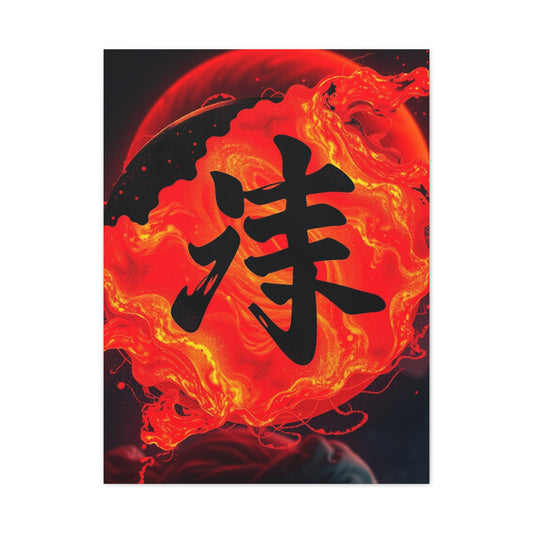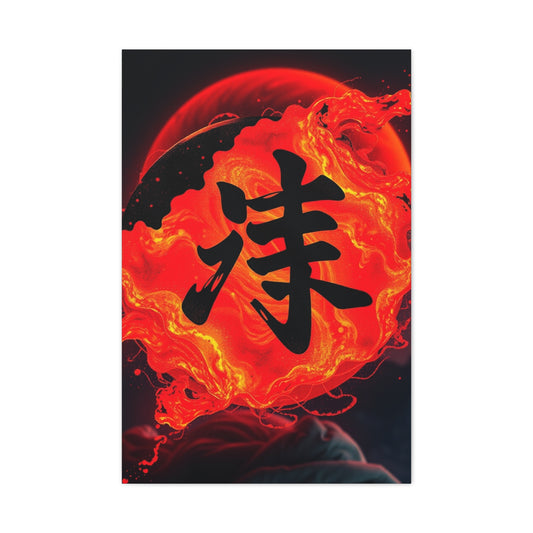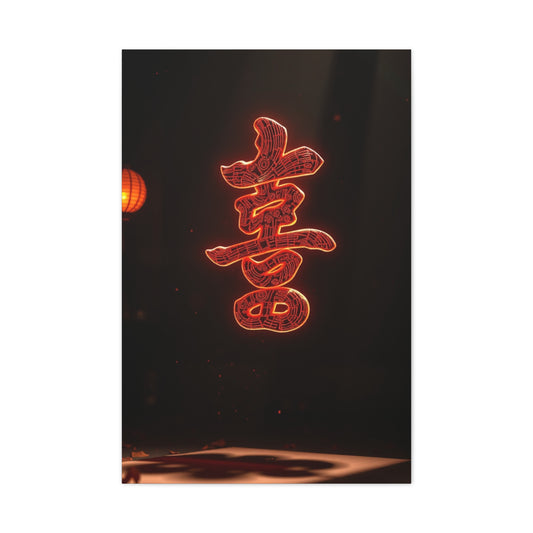The resurgence of terracotta tiles in modern interior design represents a fascinating convergence of historical craftsmanship and contemporary aesthetics. These earthen marvels, forged from natural clay and fired to perfection, have transcended centuries to become quintessential elements in today's sophisticated living environments. Their inherent warmth, organic texture, and versatile application possibilities make them an exceptional choice for homeowners seeking to establish an atmosphere of refined comfort and authentic character within their dwellings.
The appeal of terracotta tiles extends far beyond mere visual attraction. These remarkable ceramic surfaces embody a rich cultural heritage that spans civilizations, from ancient Mediterranean architecture to modern Scandinavian minimalism. Their ability to harmoniously integrate with diverse design philosophies while maintaining their distinctive identity positions them as invaluable assets in contemporary interior decoration schemes.
Modern homeowners increasingly gravitate toward materials that offer both aesthetic appeal and practical functionality. Terracotta tiles fulfill this dual requirement exceptionally well, providing surfaces that are not only visually captivating but also remarkably durable and relatively maintenance-friendly. The natural variation in color, texture, and finish that characterizes these tiles ensures that each installation becomes a unique expression of personal style and architectural vision.
Understanding the Intrinsic Properties of Earthenware Ceramic Tiles
The fundamental characteristics of terracotta tiles stem from their composition and manufacturing processes. Created from natural clay deposits that are carefully selected for their mineral content and plasticity, these tiles undergo a meticulous transformation process that involves shaping, drying, and firing at specific temperatures to achieve desired properties.
The texture variations found in terracotta tiles range from completely smooth surfaces to deliberately roughened finishes that emphasize their handcrafted origins. Unglazed varieties showcase the raw, porous nature of the fired clay, displaying subtle color variations and natural imperfections that contribute to their authentic charm. These surface characteristics create fascinating interplays of light and shadow that evolve throughout the day, adding dynamic visual interest to interior spaces.
Glazed terracotta tiles offer an entirely different aesthetic experience. The application of ceramic glazes during the firing process creates surfaces that range from matte to high-gloss finishes, each reflecting light differently and contributing unique atmospheric qualities to interior environments. The glazing process also enhances the tiles' resistance to stains and moisture, making them suitable for areas where durability and easy maintenance are paramount considerations.
The thermal properties of terracotta tiles deserve particular attention in contemporary design applications. Their excellent heat retention capabilities make them ideal companions for underfloor heating systems, creating comfortable walking surfaces that maintain warmth efficiently. This characteristic proves especially valuable in climates where maintaining comfortable indoor temperatures is essential for year-round comfort.
Comprehensive Analysis of Design Variations and Aesthetic Possibilities in Terracotta Tiles
Terracotta tiles have long been celebrated for their timeless appeal, offering both rustic charm and the ability to adapt to a range of interior styles. As one of the most versatile materials in design, terracotta tiles are available in a myriad of patterns, shapes, surface treatments, and colors, each contributing to the creation of unique, visually compelling environments. From traditional designs to modern interpretations, terracotta tiles can enhance any space, providing both functional and aesthetic value. The following exploration delves into the diverse design possibilities and aesthetic variations that terracotta tiles offer, demonstrating their capacity to elevate interior spaces.
The Expansive Range of Terracotta Tile Shapes and Configurations
Terracotta tiles are no longer confined to the classic rectangular or square shapes that have dominated traditional design schemes. While these familiar shapes remain popular for their simplicity and versatility, contemporary tile manufacturers have expanded their offerings to include a wide range of geometric shapes and configurations. These innovations open the door to more intricate, visually dynamic installations, offering designers the opportunity to craft truly unique looks for residential and commercial interiors.
Among the newer and more unconventional shapes are hexagonal tiles, diamond-shaped pieces, and even custom, irregularly shaped options that break free from the constraints of traditional tiling. The ability to mix and match these shapes within a single design enables the creation of bold, modern patterns that can redefine the appearance of any room. For instance, hexagonal tiles are particularly effective in creating a honeycomb-like effect, which works beautifully for both floors and walls, evoking a sense of movement and rhythm. Their angular edges and clean lines make them ideal for contemporary or industrial-inspired spaces.
Beyond standard geometric shapes, designers can now incorporate tiles in asymmetrical and freeform designs, lending an artful, organic quality to the installation. Custom configurations allow for tailored tile layouts that can make spaces feel more personal and artistic. Such installations can range from subtly irregular to boldly abstract, offering a sense of bespoke craftsmanship that goes beyond the ordinary.
Patterns that Influence Scale and Spatial Perception
The pattern in which terracotta tiles are laid can significantly alter the perception of space. Patterns are a powerful design tool that help define the visual flow of a room, adding depth, dimension, and character. Different tile arrangements can either emphasize the openness of a room or create a more intimate, enclosed feeling, depending on how they interact with the surrounding architecture.
Among the most common and classic tile patterns is the running bond, a layout in which tiles are arranged in a staggered, linear fashion. This traditional pattern offers a clean, continuous look and works especially well in larger spaces, as it promotes the illusion of length and openness. This layout is often favored for its simplicity, creating a sophisticated, ordered aesthetic that fits seamlessly with various design styles, from Mediterranean to contemporary.
For those seeking a more intricate look, herringbone and chevron patterns are two popular choices. These angular arrangements create a sense of movement, drawing the eye along the pattern’s lines and adding visual complexity to the room. Herringbone, with its V-shaped layout, evokes a sense of classic luxury, while chevron patterns, which feature a zigzag design, add energy and dynamic interest. Both patterns are perfect for smaller spaces where an element of visual complexity can add depth and make the room feel more expansive.
In addition to these popular patterns, basketweave designs create a sense of symmetry and order. This pattern, in which two sets of parallel tiles are woven together, can be used to achieve a more traditional or even vintage aesthetic. Its structured form adds texture without overpowering the rest of the room's design.
Diagonal tile placements are another effective technique for enhancing the sense of space. By laying tiles at an angle, typically 45 degrees to the walls, rooms can feel larger and more dynamic. This method works particularly well in square or smaller rooms, as it draws the eye outward and creates the illusion of a more expansive area. Diagonal patterns are especially impactful when paired with large-format tiles, as the pattern’s flow enhances the sense of openness and fluidity.
The Impact of Color Variations and Natural Tones
One of the most compelling aspects of terracotta tiles is the diversity of color variations available. Traditional terracotta is often associated with its signature warm, reddish-brown hues, but the full spectrum of color options extends far beyond this classic shade. Tiles made from natural clay deposits from different geographical regions can result in distinctive color characteristics, each contributing to a unique design narrative.
Colors range from pale peachy tones and soft apricots to deep russet browns, rich charcoal grays, and even subtle green or beige undertones. These natural color variations not only contribute to the aesthetic appeal of terracotta tiles but also reflect the regional diversity of the material itself. As a result, each tile installation can feel deeply connected to the environment from which it originated, creating a sense of authenticity and organic beauty.
Innovative manufacturing techniques have also allowed the creation of terracotta tiles in an even broader range of colors, including softer pastels, vibrant reds, and even earthy blues. These variations provide designers with more flexibility, enabling them to select tiles that complement specific color schemes in the interior design. By pairing terracotta tiles with other materials such as natural stone, wood, or glass, designers can create rich, layered looks that evoke the natural world and bring a sense of warmth and comfort to the room.
The richness of terracotta tile colors can be further enhanced through specialized firing techniques and surface treatments. Whether through the use of high-gloss glazes or matte finishes, the colors in terracotta tiles can be manipulated to create distinct visual effects, such as subtle variations in hue, depth, and tone. This flexibility allows designers to create unique, custom installations that reflect a wide array of aesthetic preferences, from traditional to modern.
Surface Textures: Enhancing Function and Beauty
Terracotta tiles are not just a visual element—they are also tactile in nature. The surface texture of terracotta tiles can influence not only the aesthetic but also the functionality of the space. Modern manufacturers offer a range of surface finishes, from deliberately aged and rustic finishes that evoke a sense of history, to sleek and polished surfaces that reflect light dramatically, creating a sense of luxury and opulence.
Aged finishes, which replicate the appearance of centuries-old terracotta, add a rustic, earthy charm to interiors. These tiles are particularly well-suited for spaces that aim to evoke a sense of timelessness, such as Mediterranean-inspired kitchens, rustic country-style living rooms, or traditional outdoor patios. The slightly worn texture of aged tiles adds a layer of character and uniqueness, ensuring that no two installations look alike.
Highly polished terracotta surfaces, on the other hand, offer a contemporary twist on the traditional material. These glossy tiles are perfect for modern, high-end spaces, where their reflective quality can brighten the room and create a striking contrast with other materials. Polished terracotta tiles work especially well in bathrooms and entryways, where the reflective surfaces create a clean, bright atmosphere while maintaining the organic warmth that terracotta is known for.
Textured finishes are also highly functional, providing an enhanced slip resistance that makes them ideal for use in high-traffic areas, including kitchens and bathrooms. Textured terracotta tiles provide a tactile experience underfoot, creating a sense of depth and providing safety where smooth tiles might be slippery, especially when wet. The subtle texture adds visual interest, making it a great option for rooms that require both beauty and practicality.
Decorative and Artistic Variations in Terracotta Tiles
The evolution of terracotta tiles has introduced an exciting array of artistic possibilities that extend beyond the traditional use of this material. Contemporary tile designers have developed techniques that allow for the incorporation of multiple colors and decorative elements within individual tiles. These tiles can feature intricate patterns, decorative motifs, and even hand-painted designs that transform them into standalone works of art.
By integrating multiple colors into a single tile, designers can create focal points and accent areas that draw attention and add visual complexity to the overall design without overwhelming the room. These tiles can be used to create a feature wall, frame architectural details, or introduce a pop of color in otherwise neutral spaces. Whether it's a tile with a floral motif or one that mimics the appearance of vintage Moroccan ceramics, decorative terracotta tiles add a sense of artistic flair and cultural richness to the room.
The introduction of custom-designed terracotta tiles further expands creative possibilities. With advances in tile manufacturing technology, designers can commission unique tiles tailored to specific projects. This allows for the creation of one-of-a-kind installations that express personal style and taste while enhancing the overall aesthetic of the space.
Functionality Meets Design: Terracotta Tiles for Every Room
Terracotta tiles are renowned not only for their beauty but also for their durability and practical benefits. These tiles are an excellent choice for flooring, backsplashes, and wall installations in various areas of the home, including kitchens, living rooms, bathrooms, and outdoor spaces. Their natural resistance to heat, moisture, and wear makes them an ideal option for high-traffic areas and spaces that are subject to frequent exposure to water.
In kitchens, terracotta tiles provide both aesthetic appeal and functionality, creating a warm, rustic feel while withstanding the demands of cooking and cleaning. In bathrooms, their natural moisture resistance makes them an excellent choice for wet areas like shower walls and floors. Outdoor spaces, such as patios and courtyards, can benefit from the durability and weather resistance of terracotta tiles, creating an inviting, natural atmosphere that complements the surrounding environment.
The versatility of terracotta tiles also extends to their ability to adapt to various design styles. From traditional Mediterranean villas to modern industrial lofts, terracotta tiles can be used in a wide array of aesthetic contexts. Whether you're looking for a rustic farmhouse feel, a bohemian-inspired living space, or a minimalist modern retreat, terracotta tiles can provide the perfect foundation for your design vision.
Strategic Implementation of Floor Installation Systems
Successful terracotta floor tile installation requires careful consideration of substrate preparation, adhesive selection, and environmental factors that affect long-term performance. The porous nature of unglazed terracotta tiles necessitates the use of specialized installation materials and techniques that accommodate their unique expansion and contraction characteristics.
Substrate preparation begins with ensuring that the underlying floor structure is completely level, stable, and free from moisture issues that could compromise the installation. Concrete floors often require the application of primer systems that enhance adhesion and prevent moisture migration. Wooden subfloors may need additional reinforcement to minimize deflection that could cause tile cracking or grout failure.
Adhesive selection plays a crucial role in installation success. Flexible polymer-modified adhesives accommodate the natural movement of terracotta tiles while providing strong, durable bonds that withstand daily use and cleaning procedures. The adhesive application technique, including proper trowel selection and coverage patterns, directly influences the installation's longevity and performance characteristics.
Grout selection for terracotta floor installations involves balancing aesthetic preferences with practical performance requirements. Natural sand-based grouts complement the earthy character of terracotta tiles while providing adequate flexibility and stain resistance. Epoxy grouts offer superior stain resistance and durability in high-traffic applications but may appear too contemporary for traditional design schemes.
Expansion joint placement becomes particularly important in large terracotta floor installations. These joints accommodate thermal expansion and structural movement that naturally occurs in buildings, preventing stress-related cracking and maintaining the installation's integrity over time. Strategic placement of expansion joints can be integrated into the overall design pattern to minimize their visual impact while maintaining functionality.
Innovative Wall Application Techniques and Design Strategies
Terracotta wall tiles offer unprecedented opportunities for creating dramatic architectural features and accent walls that transform ordinary interior spaces into extraordinary environments. The vertical application of these tiles requires specialized installation techniques that account for gravitational forces and the unique challenges of working on vertical surfaces.
Wall tile installation begins with proper substrate preparation that ensures adequate support and prevents moisture infiltration. Drywall surfaces typically require priming with appropriate sealers, while masonry walls may need additional waterproofing treatments to prevent moisture-related issues. The installation of proper backing materials, such as cement backer board, provides enhanced stability and moisture resistance in demanding applications like bathroom and kitchen walls.
The visual impact of terracotta wall tiles can be maximized through strategic lighting design that emphasizes their texture and color variations. Grazing light techniques, where light sources are positioned to illuminate surfaces at acute angles, create dramatic shadow patterns that highlight the tiles' three-dimensional characteristics. Accent lighting can transform simple wall installations into stunning architectural features that serve as focal points within interior compositions.
Pattern mixing represents an advanced design technique that combines different terracotta tile sizes, shapes, or colors within single wall installations. These compositions require careful planning and precise execution to achieve harmonious results that enhance rather than overwhelm interior spaces. Successful pattern mixing often involves establishing a dominant element while using contrasting tiles as accents or borders.
The integration of terracotta wall tiles with other materials creates opportunities for sophisticated design compositions that showcase the tiles' versatility. Combinations with natural stone, wood paneling, or metal accents can produce striking visual effects that emphasize the unique characteristics of each material while creating cohesive design statements.
Mastering Color Coordination and Palette Development
The color palette possibilities available with terracotta tiles extend far beyond traditional earth tones, encompassing subtle variations that can complement virtually any interior design scheme. Understanding how these colors interact with natural and artificial lighting throughout different times of day enables designers to specify tiles that maintain their intended appearance under various illumination conditions.
Warm terracotta tones, ranging from pale salmon to deep burgundy, create inviting atmospheres that promote relaxation and comfort. These colors work particularly well in living areas, bedrooms, and casual dining spaces where creating a welcoming ambiance is a primary design objective. The inherent warmth of these hues can visually warm cool interior spaces and provide psychological comfort during colder seasons.
Cool-toned terracotta tiles, including those with gray or green undertones, offer sophisticated alternatives that complement contemporary design aesthetics while maintaining the material's inherent character. These colors work exceptionally well in modern kitchens, bathrooms, and professional spaces where a more restrained color palette is desired.
The interaction between terracotta tile colors and surrounding design elements requires careful consideration during the selection process. Paint colors, furniture finishes, fabric selections, and decorative accessories all influence how terracotta tiles appear within completed interior compositions. Creating sample boards that include all major design elements enables accurate color assessment before final installation.
Natural light exposure significantly affects terracotta tile appearance throughout different times of day and seasons. North-facing rooms tend to emphasize cool undertones, while south-facing spaces enhance warm characteristics. Understanding these lighting effects enables designers to select tiles that maintain their intended appearance under the specific lighting conditions of each installation location.
Professional Installation Methodologies and Quality Assurance
Professional terracotta tile installation requires specialized knowledge, appropriate tools, and adherence to industry best practices that ensure long-lasting, high-quality results. The selection of qualified installation professionals represents a critical decision that directly impacts the success and longevity of any terracotta tile project.
Pre-installation planning involves detailed assessment of project requirements, including substrate conditions, environmental factors, and design objectives. Professional installers conduct thorough site inspections to identify potential challenges and develop installation strategies that address specific project requirements while maintaining aesthetic goals.
Tool selection for terracotta tile installation includes specialized cutting equipment capable of producing clean, precise cuts without damaging the tiles' edges or surfaces. Wet saws with diamond blades specifically designed for ceramic materials ensure accurate cuts while minimizing dust generation and heat buildup that could affect tile integrity.
Quality control procedures throughout the installation process include regular checks of alignment, level, and spacing consistency. Professional installers maintain detailed documentation of installation progress and address any issues immediately to prevent compounding problems that could compromise the finished installation's appearance or performance.
Post-installation procedures include thorough cleaning to remove installation residues, application of appropriate sealers where required, and final inspection to ensure all aspects of the installation meet specified quality standards. Professional installers provide detailed maintenance instructions and warranty information that protect the client's investment and ensure optimal long-term performance.
Comprehensive Maintenance Protocols for Optimal Longevity
Maintaining the pristine appearance and structural integrity of terracotta tiles requires implementation of systematic cleaning and maintenance protocols tailored to the specific characteristics of these materials. Understanding the differences between glazed and unglazed surfaces enables property owners to develop appropriate maintenance strategies that preserve their investment while minimizing long-term costs.
Daily maintenance routines for terracotta floor tiles begin with regular sweeping or vacuuming to remove abrasive particles that could cause surface wear over time. The use of appropriate vacuum attachments prevents scratching while effectively removing dust, debris, and tracked-in particles that accumulate through normal use patterns.
Weekly cleaning procedures involve damp mopping with pH-neutral cleaning solutions specifically formulated for ceramic surfaces. Harsh cleaners containing acids or strong alkaline compounds can damage terracotta surfaces and should be avoided entirely. The cleaning solution temperature should remain moderate to prevent thermal shock that could cause surface cracking or expansion joint failure.
Stain prevention strategies include immediate attention to spills, particularly those involving acidic substances like wine, citrus juices, or vinegar that can etch unglazed terracotta surfaces. Quick response to spills minimizes penetration and reduces the likelihood of permanent staining that requires intensive restoration procedures.
Protective treatments for unglazed terracotta tiles include the periodic application of penetrating sealers that reduce porosity without altering the tiles' natural appearance. These treatments enhance stain resistance and simplify routine cleaning while maintaining the authentic character that makes terracotta tiles so appealing in interior applications.
Annual maintenance procedures should include professional inspection of grout joints, expansion joints, and overall tile condition. Early identification of maintenance needs prevents minor issues from developing into major problems that require extensive repair or replacement procedures.
Advanced Design Integration Techniques for Contemporary Spaces
The integration of terracotta tiles into contemporary interior design schemes requires sophisticated understanding of how traditional materials can enhance modern aesthetic principles while maintaining their authentic character. This integration process involves careful consideration of proportion, scale, texture relationships, and color harmonies that create cohesive design compositions.
Minimalist design approaches benefit from terracotta tiles' ability to add warmth and texture without visual complexity. Large format tiles with subtle color variations can create serene, uncluttered environments that emphasize space and light while providing the tactile richness that makes interiors feel comfortable and inviting.
Maximalist design schemes can incorporate terracotta tiles as grounding elements that provide visual stability within complex, layered compositions. The earthy, neutral characteristics of these tiles complement bold patterns, vibrant colors, and diverse textures without competing for attention or overwhelming the overall design aesthetic.
Biophilic design principles align naturally with terracotta tiles' organic origins and earth-connected characteristics. These tiles support design strategies that emphasize human connection with natural materials and processes, contributing to interior environments that promote wellbeing and psychological comfort.
Transitional design approaches utilize terracotta tiles as bridge elements that connect traditional and contemporary design elements within single spaces. Their timeless character enables them to complement both antique furnishings and cutting-edge contemporary pieces while maintaining design coherence throughout interior compositions.
Environmental Considerations and Sustainability Factors
The environmental impact of terracotta tile selection extends beyond immediate aesthetic and functional considerations to encompass broader sustainability issues that increasingly influence design decisions. Understanding the environmental implications of material choices enables responsible specification that supports both design objectives and environmental stewardship goals.
Manufacturing processes for terracotta tiles typically involve lower energy consumption compared to many alternative ceramic materials, as the firing temperatures required are generally lower than those needed for porcelain or other high-fired ceramics. This reduced energy requirement translates to lower carbon footprint and reduced environmental impact throughout the manufacturing process.
Local sourcing opportunities for terracotta tiles can significantly reduce transportation-related environmental impacts while supporting regional economies and traditional crafts communities. Many regions with appropriate clay deposits maintain traditional tile-making industries that produce high-quality products with minimal environmental impact through established, efficient production processes.
End-of-life considerations for terracotta tiles include their potential for recycling or repurposing in landscape applications, where their natural composition enables them to integrate harmlessly with soil systems. Unlike synthetic materials that may persist indefinitely in landfills, terracotta tiles can return to earth-based systems without negative environmental consequences.
Indoor air quality benefits associated with terracotta tiles include their non-toxic composition and absence of volatile organic compounds that can contribute to indoor pollution. The natural, porous structure of unglazed tiles can even contribute to humidity regulation within interior environments, supporting comfortable, healthy indoor air conditions.
Troubleshooting Common Installation and Maintenance Challenges
Understanding potential problems that can occur with terracotta tile installations enables proactive prevention strategies and appropriate response procedures when issues do arise. Early recognition of problem indicators can prevent minor issues from developing into major restoration projects that require extensive time and financial investment.
Cracking issues in terracotta installations often result from substrate movement, improper expansion joint placement, or thermal stress. Prevention strategies include adequate substrate preparation, proper expansion joint design, and selection of appropriate installation materials that accommodate normal building movement and thermal expansion.
Staining problems typically affect unglazed terracotta tiles more than glazed varieties, particularly in areas exposed to spills or high moisture conditions. Prevention involves appropriate sealer application, prompt spill cleanup, and regular maintenance that prevents stain-causing substances from penetrating tile surfaces.
Grout-related issues, including cracking, discoloration, or deterioration, can compromise both the appearance and performance of terracotta tile installations. Regular grout maintenance, appropriate cleaning procedures, and timely repair of damaged grout joints prevent water infiltration and maintain installation integrity.
Efflorescence, the appearance of white crystalline deposits on tile surfaces, can occur when water-soluble salts migrate to the surface and crystallize. Prevention strategies include proper substrate preparation, adequate waterproofing, and selection of appropriate installation materials that minimize moisture infiltration.
Final Thoughts
The evolution of terracotta tile manufacturing continues to introduce innovative products and techniques that expand design possibilities while maintaining the authentic character that makes these materials so appealing. Understanding emerging trends enables designers and homeowners to make informed decisions that will remain current and appealing over time.
Digital printing technologies enable the creation of terracotta tiles with highly detailed surface patterns and color variations that would be impossible to achieve through traditional manufacturing methods. These advanced printing techniques can reproduce natural stone patterns, wood grain textures, or even artistic designs while maintaining the structural characteristics of fired clay.
Large format terracotta tiles represent a significant trend toward creating seamless, continuous surfaces that emphasize space and minimize grout joint visibility. These oversized tiles require specialized handling and installation techniques but offer opportunities for creating dramatic, uninterrupted surface expressions in contemporary interior applications.
Textural innovations include three-dimensional surface treatments that create pronounced relief patterns, adding significant tactile and visual interest to wall installations. These textured surfaces interact with lighting in complex ways, creating dynamic visual effects that change throughout the day as lighting conditions vary.
Sustainable manufacturing initiatives focus on reducing environmental impact through improved energy efficiency, waste reduction, and incorporation of recycled materials in tile production. These developments support environmentally conscious design decisions while maintaining the quality and performance characteristics expected from premium terracotta products.
The resurgence of terracotta tiles in contemporary interior design represents far more than a simple trend revival. These remarkable ceramic surfaces offer a perfect synthesis of historical authenticity and modern functionality, providing design solutions that satisfy both aesthetic aspirations and practical requirements. Their versatility enables integration into virtually any design style, from rustic farmhouse aesthetics to sleek urban contemporary environments.
The investment value of terracotta tiles extends beyond their initial cost to encompass their exceptional durability, timeless appeal, and relatively low maintenance requirements. When properly installed and maintained, these surfaces can provide decades of reliable service while maintaining their attractive appearance and contributing to property value appreciation.
For homeowners and designers seeking to create interior environments that embody both comfort and sophistication, terracotta tiles offer unparalleled opportunities for achieving these dual objectives. Their natural warmth, authentic character, and design versatility make them exceptional choices for virtually any interior application where creating atmosphere and expressing personal style are primary considerations.





























